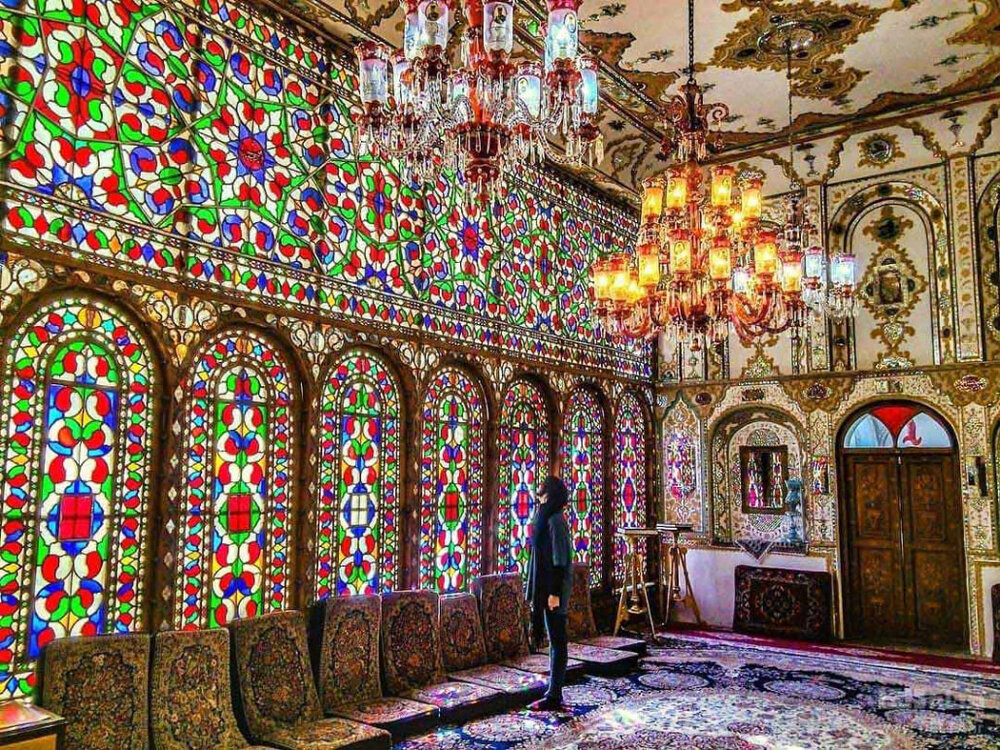Explore celebration of colors and lights at historical Motamedi house

The extraordinary Motamedi house is overstuffed with nearly all Iranian traditional decorations in such a way that one may say it’s a festival of colors and lights.
Located in Isfahan, known as ‘half the world’ among Iranians, the house is a blend of neoclassical and traditional Persian architecture and filled with chandeliers, mirrorwork, tilework, stuccowork, woodwork, stained glass, and woodwork.
Amid the eclectic jumble of objects and essences, one can find a fine example of a centuries-old house, where typical Iranian merchants lived in it. Some previous visitors have recommended others to tour it in the middle of the day if interested to witness the dancing colors of the light.
Also known as Mollabashi house, the monument originally dates back to the Zand era (1736-1795) and was purchased during the rule of Zell-e Sultan in Isfahan by Mollabashi, the astronomer of Naser al-Din Shah. Mr. Motamedi bought this house in 2001 and renovated the damaged parts of the house, which is renowned for its beauty in architecture and furniture layout.
The house can be divided into two portions: the living spaces and service spaces. In living spaces, you may be faced with warm and intimate, high energy and high lighting, and in the service spaces, there are rooms for rest and business, in which space is more closed, more serious, and less decorated.
The striking interior design of entrance with mogharnas tiles, a polygonal room with a water pond in the middle for use in the summer, a rectangular big room with a mirrored and fresco walls designed to host, celebrate & reception of special guests are only a few of the unique attractions of this beautiful historic house.
The exterior courtyard bears a cozy little garden with well-manicured trees, there is also a staircase leading visitors to the upper floor where the porch is located. A cozy room is located at the end of the courtyard, with windows facing the opposite street. In this room, all the objects and tools have their own history. The room seems more attractive in the evening when sunlight shines through.
From the courtyard or adjoining corridor, which is fully decorated as well, one can reach the summer alcove of the home that is a memorial to the Zand era of the country.
The inner courtyard is what one may expect from a historic home in Iran. This part completely preserved its historical space, and the nine doors and the five doors with that old woods gave a strange glory to space. It’s full of beautifully colored paintings to add to the color of the building.
Isfahan is filled with many architectural wonders such as unmatched Islamic buildings, bazaars, museums, Persian gardens, and tree-lined boulevards. It's a city for walking, getting lost in its mazing bazaars, dozing in beautiful gardens, and meeting people. The cool blue tiles of Isfahan's Islamic buildings and the city's majestic bridges contrast perfectly with the encircling hot, dry Iranian countryside.
AFM/MG
